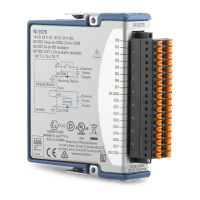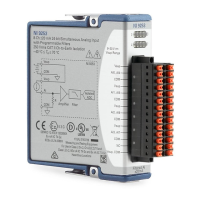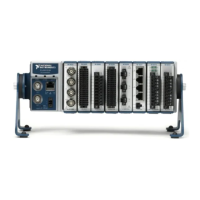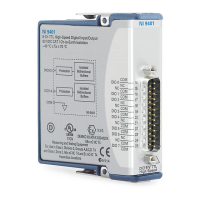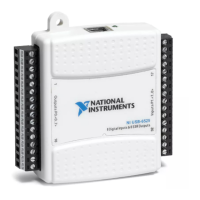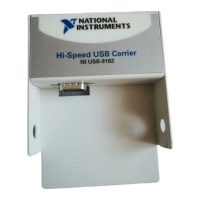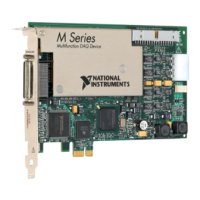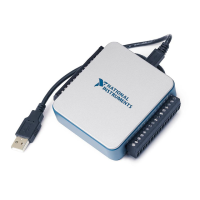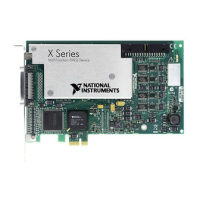2-2 | ni.com
Chapter 2 NI 651x Features
The filter clock is programmable and allows you to control how long a pulse must last to be
recognized. The sample clock provides a fast sample rate to ensure that input pulses remain
constant between filter clocks.
Digital Filtering Example
Figure 2-1 shows a filter configuration with a t
interval
filter interval (t
interval
/2 filter clock).
Figure 2-1. Digital Filtering Example
In periods A and B, the filter blocks the glitches because the external signal does not remain
steadily high from one rising edge of the filter clock to the next. In period C, the filter passes the
transition because the external signal remains steadily high. Depending on when the transition
occurs, the filter may require up to two filter clocks—one full filter interval—to pass a transition.
Figure 2-1 shows a rising (0 to 1) transition. The same filtering applies to falling (1 to 0)
transitions.
Note NI 6512/6513/6516/6517 devices do not support digital filtering.
Programmable Power-Up States
At power-up, the output drives on the NI 651x device is disabled. All output lines are
user-configurable for an on or off state. User-configurable power-up states are useful for
ensuring that the NI 651x device powers up in a known state.
To use MAX (recommended) to program the power-up states, select the device and click the
Properties button. Refer to the software documentation for information about how to program
the power-up states using NI-DAQ with LabVIEW or other National Instruments application
development environments (ADEs).
Note The response time of programmable power-up states is 400 ms.
Note NI 6510/6511 devices do not support programmable power-up states.
External
Signal
External
Signal
Sampled
Filter
Clock
Sample Clock (100 ns)
Filtered
Signal
HHHHH
HLLHH
HLLHH
A
B
C
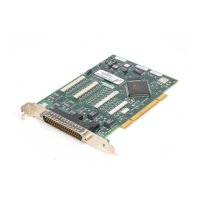
